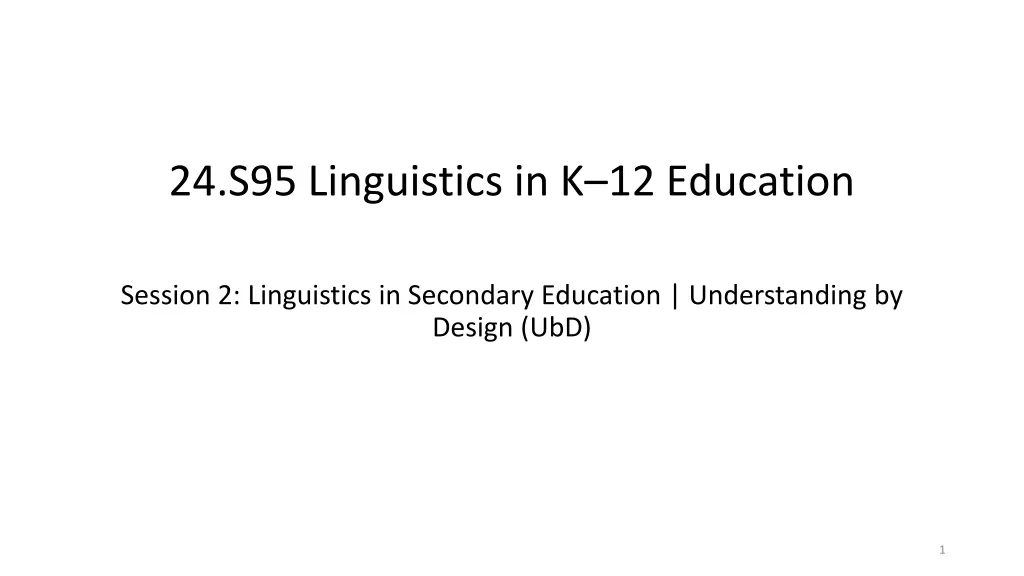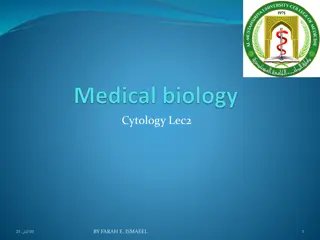
Understanding Linguistics in K-12 Education Through UbD Framework
Explore the integration of linguistics in K-12 education through the Understanding by Design (UbD) framework. Discover the rationale behind linguistics education, the importance of linguistic literacy, and the stages of UbD for effective learning outcomes.
Download Presentation

Please find below an Image/Link to download the presentation.
The content on the website is provided AS IS for your information and personal use only. It may not be sold, licensed, or shared on other websites without obtaining consent from the author. If you encounter any issues during the download, it is possible that the publisher has removed the file from their server.
You are allowed to download the files provided on this website for personal or commercial use, subject to the condition that they are used lawfully. All files are the property of their respective owners.
The content on the website is provided AS IS for your information and personal use only. It may not be sold, licensed, or shared on other websites without obtaining consent from the author.
E N D
Presentation Transcript
24.S95 Linguistics in K12 Education Session 2: Linguistics in Secondary Education | Understanding by Design (UbD) 1
Plan for today: Spring Spark update Discuss February 8 topic: Rationale for Linguistics in K-12 Education Discuss Understanding by Design (UbD) framework 3:15-3:30 Break Discuss Linguistics in Secondary Education Develop an initial sketch of Stage 1 for Spring Spark Wrap-up 2
Spring Spark update Linguistics: The Science of Language Did you know that language, like all natural phenomena, can be observed and investigated in a scientific way? What is unique about language is that everyone has their own personal and infinite data set living inside their brain. Learn to examine that data the way a linguist would, and puzzle over things that you may not realize you know about the language that you use every day. Learn how linguistics, the science of language, relates to your world and what you're interested in. Sat., March 18 after 1 pm; two 50-minute sections of 20 students, grades 7 & 8 3
Rationale for linguistics in K-12 education Why linguistics? in science, social studies, language arts in K-12 What purpose might linguistics education serve? What might it mean to be linguistically literate? What is the goal of education? 4
Understanding by Design (UbD) What is understanding? 5
Understanding by Design (UbD) What is understanding? You know that someone really understands when You know that someone really doesn t understand when 6
Understanding by Design (UbD) What is understanding? You know that someone really understands when You know that someone really doesn t understand when What is understanding? will be an essential question for our work. 7
Understanding by Design (UbD) Stage 1 Identify desired results (transfer goals; essential questions) Stage 2 Determine acceptable evidence of understanding Stage 3 Plan learning experiences and teaching that align with Stage 1 and Stage 2 8
Understanding by Design (UbD) The Logic of Backward Design (Wiggins & McTighe 2011: 9, Figure A.1) Stage 1: If the desired end result is for learners to Stage 2: then you need evidence of the learners ability to Stage 3: then the learning events need to... Sketch a lesson about something you know how to do well, applying the UbD stages. 9
Understanding by Design (UbD) Overview of The UbD Template, Version 2.0 (Figure B.1 in Wiggins & McTighe 2011: 16-17) 10
Linguistics in secondary education Consider the case studies with the UbD framework in mind. Do the authors: Identify desired results Present evidence of understanding (e.g., transfer) Present a learning plan with learning events 11
Linguistics in secondary education Does the UbD framework help us assess the work described in the case studies? If so, how? If not, why not? 12
Back to UbDSimple Stages Template Stage 1 Desired Results: What should students learn as a result of this unit? Stage 2 Evidence: What evidence will show that students have met the Stage 1 goals? Stage 3-Learning Plan: What key learning events will help students reach the goals and be successful on the assessments? Work with a partner to sketch your ideas for Stage 1 for Spring Spark. 13
For next class: Introductory Linguistics: Desired Results | UbD, continued Before you do the reading, reflect on the question, What are the essential questions in linguistics? What essential questions would you want students to take away with them from an introductory course? Contrary to the syllabus, no linguistics teaching materials will be assigned for review. 14
MIT OpenCourseWare https://ocw.mit.edu 24.S95 Linguistics in K 12 Education, Spring 2023 For more information about citing these materials or our Terms of Use, visit https://ocw.mit.edu/terms.

